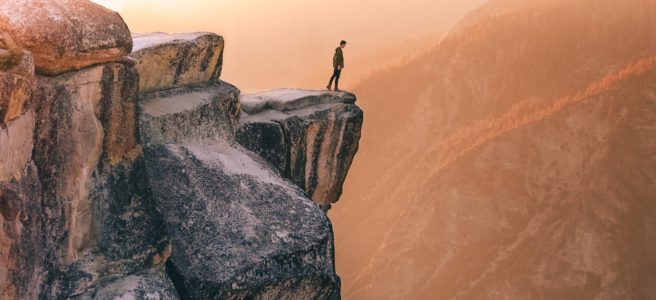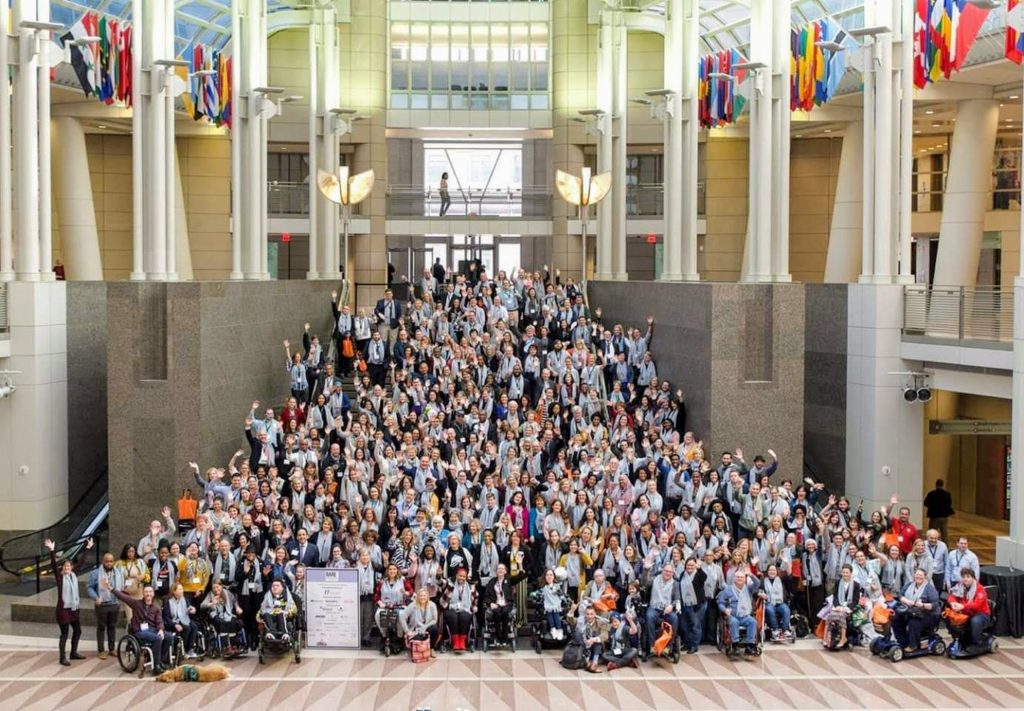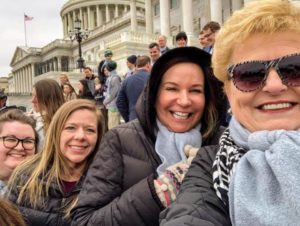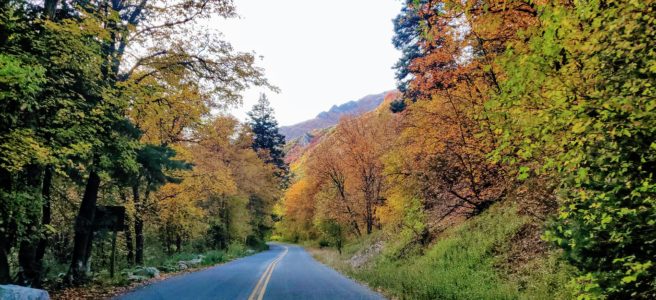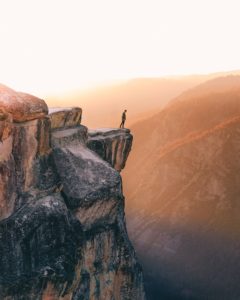
I live life on the edge.
The edge of an allergic reaction.
The edge of medical science.
The edge of an unknown, looming, black abyss.
The edge of fear.
The edge of faith.
I’m not an “edge” type of girl. I am terrified of falling. Heights have always scared me. I have always clung to the known, the safe, the solid.
I don’t have that luxury anymore.
I have been aggressively attacking my rare diseases since I was diagnosed in 2015. Each day, each doctor’s appointment, I’ve been inching closer to the edge, knowing at some point we were going to max out my options. At a recent appointment with one of my specialists, we were discussing next steps.
Reality Check
“We don’t have a lot left we can do, Megan. There’s so much we don’t know about how your condition works or how to get it to stop reacting to everything. It’s just so complicated,” my wonderful GI doctor said. “You live on the cutting edge of medicine and science.”
I sighed. I know.
During my entire childhood through college, I knew, KNEW, I was going to be a scientist. I knew that I wanted to live on the exciting, cutting edge of medicine and science–as a researcher. Working on cures for devastating conditions like Alzheimer’s disease.
Not as a patient. It never even once crossed my mind. And it’s definitely not exciting on this end of the equation.
But then God had other plans. He knew. Knew that I was going to need that basic understanding of biology because I was going to be the one with a devastating, ill-understood condition. It was heartbreaking when I didn’t get jobs in research and ended up working as a paralegal. As much as I have come to enjoy law (which surprised me), I still miss molecular biology. Until three years ago, all I used my degree for was to successfully keep my office plants alive. Now the reason I studied it for so long are obvious and I have been so grateful for that basic knowledge.
A week after the conversation with my GI doctor, I met with my immunologist, also a wonderful doctor (I’ve been so blessed). “I think we’re pretty much capped out on you, Megan. You’re already on all max doses of all the medications. I don’t have any more treatment options unless we decide to do chemotherapy. And I don’t think the side effects are worth it at this point,” he said. “I know you’ve still got symptoms, but you’re stable now. We’re going to have to wait until more treatment options are available, or your condition changes.”
I sighed again. I know. And I agreed.
Stable doesn’t mean cured, fixed, or better. It means I’m not getting catastrophically worse at the moment. I am certainly better than I was three years ago. But it means I still am sick. Still have severe allergic reactions. Still have the risk of anaphylaxis at any moment. Still might end up in the hospital. Still might get worse. Still might need chemo. Still might die from this.
I’m at the point where I’m tired of fighting my body and need a break anyway. It’s been a hard year so far. Adding in weekly immunoglobulin therapy has been more difficult than I expected. I’m exhausted–physically and emotionally.
I told both of the doctors this at the appointments. They both nodded in support and encouraged me to take a break from pushing my body and my spirit. “It’s okay to take a break. You’ve worked really hard at this for a long time. Take some time to just live. Let’s see you in six months and we’ll see where you’re at,” they both said.
I sighed. Okay.
I was afraid this day was going to come. I’ve spent three years fighting so hard to improve. Once I knew what was wrong, I had something to fight against. And I’m a good fighter. I was absolutely sure I could get better (even when my doctor wasn’t sure). And I have gotten better. I’ve improved significantly. My doctors remind me of this at every appointment. But, improvement does not equal “fixed.” They remind me of that too.
This time I hear Reality slapping and screaming at me, “There is no cure for this. You’ll be like this for the rest of your life.”
It is crushing.
I already knew it, of course, intellectually anyway. I knew it the day I got my diagnosis three years ago, but it was still devastating to hear it now, again. To feel it. To feel the thick, black emptiness below me slowly reaching for my dangling feet, ready to suck me in at any moment.
I take a deep breath. I can do this. I can keep going. I can make it six more months.
I mark time by doctor’s appointments now. Every six months. Monthly shots. Weekly infusions. Daily pills. Living in six-month windows. I’m not able to see beyond that. And some days, barely able to see tomorrow. I worry this is how the rest of my life will be like.
Reactions
Every moment I live with a fear that I’m going to have an allergic reaction. I recently walked into a lovely shop and before I even got to the entrance, I could smell a sweet perfume emanating from the store. It was too strong for me. I wore my mask, hoping it would be enough. I quickly went in and made my purchase and left the store, practically holding my breath the whole time. Praying I would not have a reaction. I’ve learned not all prayers are answered the way we want. (Also, online shopping is my favorite. No smelly stores!)
By the time I went to my next stop, one block away, I could tell I was having a reaction. A headache exploded in my skull. My GI tract was suddenly very angry at me. I was nauseous, congested, dizzy, achy, exhausted, and anxious. The bright sunlight triggered hives and diffuse itchiness. I scrambled to find my nausea medication which helps, but it’s not a cure-all. I needed benadryl. And sleep. Lots of it. But I still had a play to go to that afternoon, and a five-hour infusion to do after that. I didn’t want a reaction to stop me from living my life. I repeated my mantra to myself, “Just breathe. Slow, deep breath. Just breathe. You’ll be okay.”
I made it to the play and took some Tylenol, and hoped no one sitting near me would be wearing something scented. The play was enjoyable and I wore my mask the whole time. Naturally, I got weird looks from most people around me. I smiled and winked at the kids who stared. Hopefully communicating that I wasn’t a scary monster. Most smiled back.
I slept for the rest of the weekend. Just two stores and a play were too much for my broken body that day. Some days I can do more, some days I’m only able to do the bare minimum to survive.
Life on the Edge of the Cliff
I cling desperately to edge of my cliff, feet dangling precariously above a vast, inky black sea of nothing. Fingers curled tightly into any crevasse that may give me hold so I don’t slip. The rest of my life spread out in front of me. A giant black void of nothing. It’s all I’ve seen the past few years. Not even the glimmer of a faint star in the sky. My wonderful, brilliant doctors don’t know how to help me anymore. I don’t know how to help me anymore. I don’t know what my future holds. Staring at the empty black is terrifying. I squeeze my eyes tightly against the black so it doesn’t sink into my soul.
But sometimes I bravely open my eyes wide and stare, searching, reaching for a light in the mist. And sometimes I glimpse it, one step forward. One step enough for me.
I am not hopeless.
Attitude is Everything
A friend recently told me she can’t believe I have such a good attitude with all of this going on. I shrugged my shoulders, not sure how to respond. I don’t know that I have a great attitude about it, but complaining doesn’t help anyone. Just makes everyone around me miserable too. (Though I still do complain sometimes!) Laughing at myself is much more entertaining anyway.
What else can I do? I might sit on a cliff, dangling above an unknown future…but doesn’t everyone? No one knows their future. Everyone has struggles of some kind. Everyone is fighting unseen battles. Mine are of the weird, expensive, medical variety. Some might have family or financial struggles. Others may have difficulties at work. You might have something completely different. But my “rare” struggles don’t make me more special, or more admirable, just because they are unique.
We are all here on Earth to help and lift each other up during our struggles. Heaven knows it’s difficult, maybe even seemingly impossible some days. But I can, at least, smile at someone today. Even if that someone is just myself staring back in the mirror.
I have hope in better days yet to come.
I have hope in seeing through the black fog to the sun rising above the beautiful valley below.
I have hope that from my perspective on the edge that I’ll be able to see how far how I’ve come and the wonderful, beautiful future I have going forward.
I have hope in a bright, happy future when all pain and suffering no longer exist.
I have faith I’ll be there to enjoy that feeling.
I’ll close my eyes and bask in the happy, warm sunlight of that moment.
_____
[A version of this article was published on The Mighty, a website for people with chronic illnesses, in February 2019. It was originally written in July 2018.]

